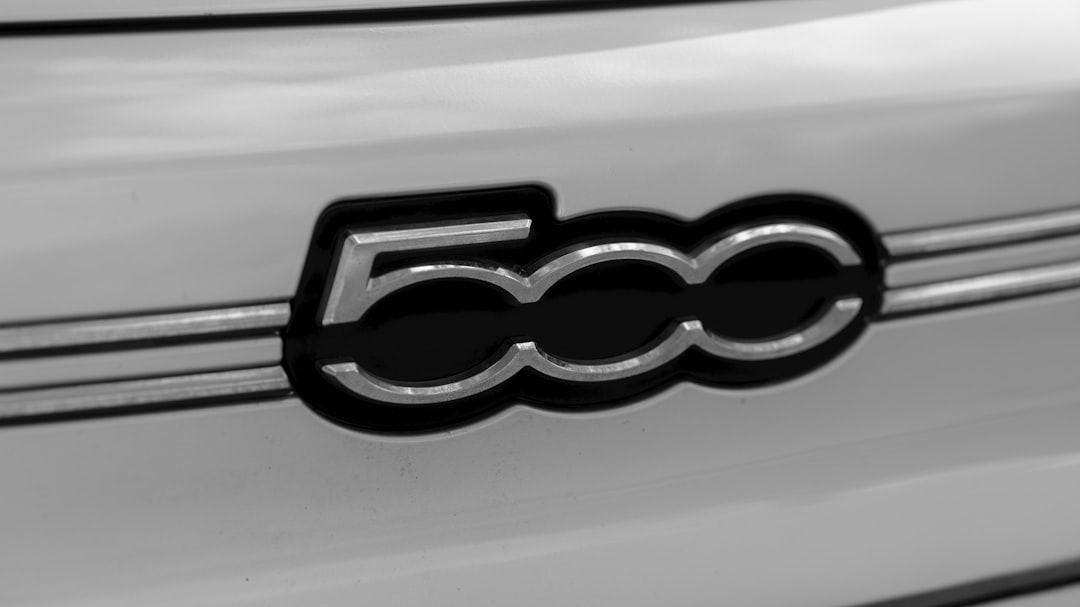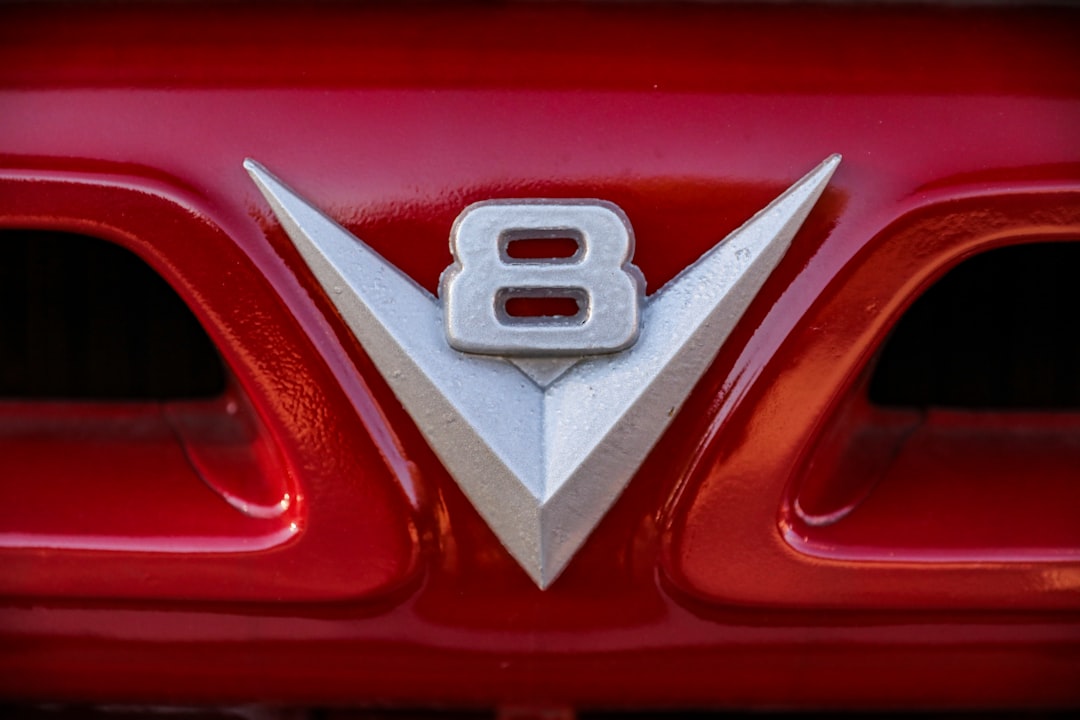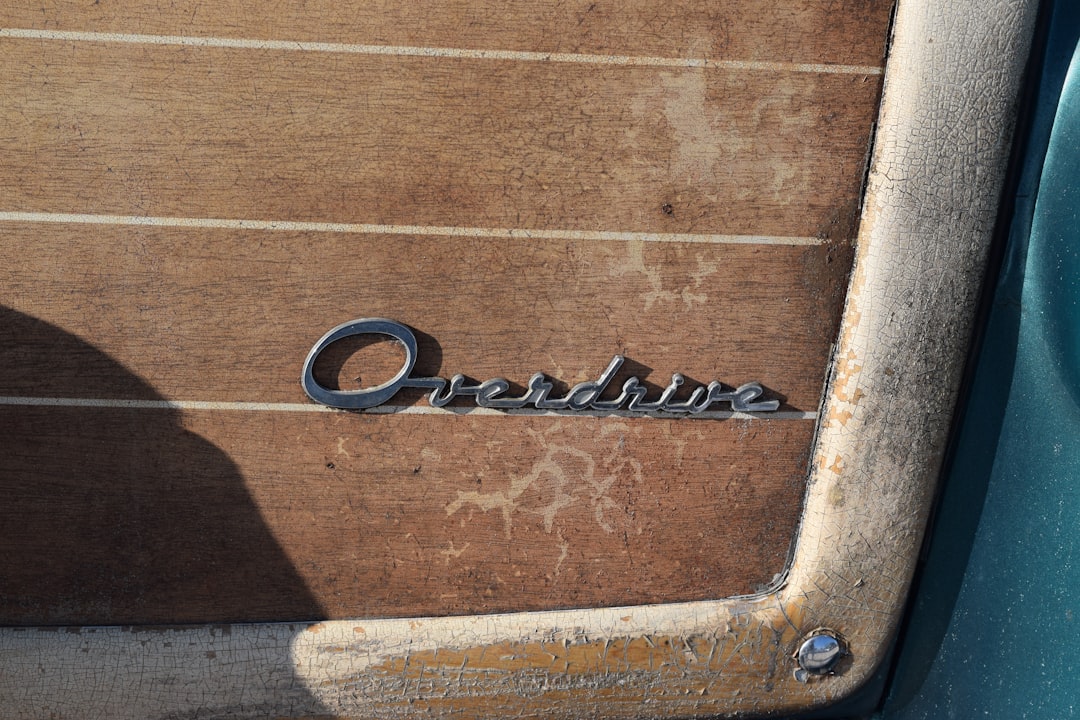

Engage prospects with a scan and streamline customer engagement with FREE QR code marketing tools by Sona – no strings attached!
Create a Free QR CodeFree consultation

No commitment

Engage prospects with a scan and streamline customer engagement with FREE QR code marketing tools by Sona – no strings attached!
Create a Free QR CodeFree consultation

No commitment
In today's digitally driven automotive market, car bumper manufacturers face a host of challenges that threaten both growth and efficiency. High-value prospects often go untracked as they research products without leaving a trace, and critical lead information is frequently missed or captured too late for timely follow-up. Traditional workflows like printed manuals, static product labels, and manual order processing are ill-equipped to meet customers' rising expectations for instant, digital-first experiences. The inability to connect offline touchpoints to measurable online engagement results in lost opportunities, limited personalization, and slow responses to market demand.
QR codes provide a seamless solution to many of these persistent industry frustrations. By enabling any user, from distributors to end customers, to instantly retrieve product data, access service portals, or trigger support inquiries with a simple scan, manufacturers modernize customer interactions and reduce the risk of anonymous leads slipping through the cracks. These digital links streamline outdated processes, allow real-time data visibility, and surface engagement signals that were previously hidden in analog silos.
By integrating QR codes throughout production lines, on packaging, and across marketing materials, forward-thinking car bumper manufacturers are closing the gap between offline and online engagement. This shift results in increased conversion rates, actionable data for retargeting, and the ability to build robust, high-fit account lists, all crucial for regulatory compliance and sustainable growth in a competitive landscape.

Historically, car bumper manufacturers struggled to capture and nurture leads that began their journey offline, resulting in missed opportunities and incomplete CRM records. QR codes have emerged as a practical bridge, transforming every car bumper, manual, and crate into a potential touchpoint for digital engagement and lead capture. When a technician, dealer, or end customer scans a code, you can route them to the right content for their context and simultaneously capture valuable intent data.
To get results, treat QR codes like purposeful gateways. Define what action you want the scanner to take, then design a clear, frictionless path to it. Align each code with a specific outcome, such as a quote request, a warranty registration, or a support ticket, and instrument it for tracking so you know which assets and moments are driving demand.
By adopting these best practices, growth marketers and operations leaders can respond in real time to engagement signals. You will address the pitfalls of late or incomplete lead capture and gradually build a data-driven sales process that learns from every offline interaction. Yes, Sona QR is built to support every step of this transformation, from code creation and dynamic routing to analytics, CRM syncs, and multi-touch attribution.

Many of the workflows that hang on in manufacturing environments were designed for a pre-digital era. Paper manuals, printed catalogs, hand-completed warranty cards, and back-and-forth emails for quotes introduce friction and delay. The result is missed follow-ups, poor attribution, and an inconsistent customer experience that does not meet modern expectations.
QR codes modernize these processes without requiring new apps or complex onboarding. They sit on top of existing materials and surfaces, transforming them into live digital entry points that drive the right action at the right moment. With dynamic routing and analytics, teams can update destinations, test messaging, and measure outcomes without reprinting.
Sophisticated platforms now support robust tracking, CRM integration, and intent-based segmentation, allowing even traditionally analog manufacturers to operate with digital precision. With Sona QR, you can route scans by context, notify reps in real time, and always know which physical assets are delivering business value.
In a sector where the ability to trace and engage with potential buyers is often hampered by physical barriers, QR codes address major pain points that hold manufacturers back. The lifecycle of a bumper travels across multiple locations and stakeholders, from OEM or aftermarket design stages to dealer showrooms and repair shops. Each handoff risks losing context and missing high-intent signals, unless there is a digital connective tissue.
QR codes create that connective tissue by turning every label, crate, brochure, and display into a measurable path to action. You can deliver exactly what the scanner needs, whether it is a quick-start guide, a torque spec, an RMA form, or a configurator, all while capturing who scanned, where, and why. This is the foundation for faster sales cycles, richer support experiences, and a clear line of sight from offline interest to online conversion.
Whether used on service reminders, supply chain documentation, showroom signage, or direct mail, QR codes enable car bumper manufacturers to attribute offline actions to pipeline outcomes and prioritize the accounts that are warming up.
Manufacturers frequently wrestle with incomplete or outdated account data, which hampers their ability to personalize follow-up and segment audiences effectively. QR codes offer versatile formats that help plug these data gaps and improve targeting while making life easier for scanners who simply want to get the right information faster.
Choosing the right QR code format depends on the action you want to trigger and the environment where the scan occurs. A technician on a shop floor needs immediate access to installation specs, while a procurement lead at an expo may want a quick way to save a distributor’s contact details. With dynamic QR codes, you can update the destination and track performance as the campaign progresses.
For long-lived assets such as printed manuals or permanent signage, static codes can suffice, especially when the destination rarely changes. For campaigns, experiments, and placements where messaging needs to evolve, dynamic codes managed through Sona QR are the better fit since they provide editability, analytics, and integration hooks in one platform.

Many car bumper manufacturers miss out on high-fit opportunities by failing to deploy digital engagement at pivotal touchpoints. The most effective placements are the ones your buyers and users already see during their normal workflows, such as unpacking parts, visiting a showroom, or walking a trade show floor.
Map your existing journey and ask where a scan would save time or clarify value. If your audience frequently requests fitment confirmation, place a code on the packaging that opens a real-time fitment checker. If your dealers ask for fresh spec sheets, give them a code that opens a dynamic product library differentiated by region and model year.
Ground your rollout in the materials you already produce, then expand to less obvious surfaces like shipping crates, invoices, and even protective films. Each location is a chance to convert curiosity into measurable next steps.

Too often, manufacturers lose visibility over key engagement signals. A scanned label in a body shop, a tradeshows badge, or a support interaction might otherwise go unrecorded. QR codes turn these into concrete opportunities for lead capture, post-sale retention, and sustained account development. The best use cases reflect real moments in your buyers’ day and align to a single, clear call to action.
Each application below reduces manual data handoff, surfaces actionable signals in real time, and builds momentum from first scan to converted lead. Align your internal processes so that scans are not just clicks, but triggers that create value instantly.
Layer these use cases with dynamic routing so that one printed code on a bumper box can adapt to different purposes across the product lifecycle. For example, a pre-sale scan might open a spec sheet, while a post-sale scan from the same box might open a warranty portal based on a parameter like scan timing or location.
A longstanding frustration for marketing teams is the inability to segment or retarget based on real offline engagement. QR code scans change this equation by capturing intent, context, and behavior that you can use to build precise audiences and tailored outreach sequences. For tactics on activation, see Sona’s Playbook intent-driven retargeting. Instead of guessing which companies are in market, you can see who scanned fitment charts, who watched installation videos, and who requested pricing, grounded in first-party intent data.
Deploy multiple QR codes across touchpoints and tag each one by journey stage, content type, and audience profile. The result is an automatically segmented dataset you can activate in your CRM and ad platforms. With Sona QR, each scan becomes a structured signal that feeds account-based marketing, email nurture, and sales alerts, helping your teams focus their time where it will pay off.
By designing your QR program around segmentation from the outset, you can move prospects through the funnel with relevant touches rather than one-size-fits-all campaigns. This not only conserves budget but also improves conversion velocity and close rates.
QR codes are connectors that unify offline and digital campaigns. They enable real-time engagement and richer data collection across every channel, from printed catalogs to in-store signage and event booths. For car bumper manufacturers, this integration is pivotal since so much of the buyer journey plays out around physical products and environments.
Think of QR codes as onramps that reduce friction. Instead of asking a prospect to type a URL or search your site, you offer an instant path to the most relevant destination. Every scan is attributed to a specific placement, so you can compare performance across channels and shift your spend to the assets that are working hardest.
QR codes serve as the offline onramp to your digital marketing engine. With a centralized platform like Sona QR, you can manage all your codes, monitor performance, run A/B tests on landing pages and calls to action, and sync scan data with your CRM and ad platforms for end-to-end attribution.
Running a high-performing QR campaign calls for more than printing a square on a label. You need clarity of purpose, thoughtful design, resilient deployment, and rigorous measurement. Treat your QR program like any mission-critical marketing initiative, with documented goals, defined success metrics, and tooling that keeps you informed.
Below is a start-to-finish checklist tailored to car bumper manufacturers. Use it to plan campaigns that capture demand at the source and connect scans to revenue. Each step includes practical considerations and watch-outs so your team can move quickly without sacrificing quality.
Set a single, specific outcome for the campaign so you can design the scan experience around it. Objectives might include capturing quotes at a distributor event, increasing warranty registrations, or decreasing installation-related support tickets.
Write down the target audience and their context when scanning. For example, a fleet manager at a trade show needs a fast path to a quote, while a technician in a body shop needs immediate installation help. These distinctions should guide the destination and the call to action.
QR codes can be static or dynamic. Static codes are fixed and simple, perfect for destinations that will not change, such as a permanent PDF of a safety sheet. Dynamic codes are editable and trackable, ideal for campaigns, testing, and any use case where you need analytics and control.
Match the code type to the intended lifecycle. If you expect to update the destination, change the offer, or run experiments, dynamic codes will save time and reduce printing waste. Sona QR streamlines this by letting you adjust routes and capture data without swapping the printed code.
QR codes on bumpers, crates, and in dealerships face unique conditions such as curved surfaces, glare, dust, vibrations, and varying lighting. Design with these realities in mind so your codes are scannable in real-world contexts and align with your brand.
Make your codes visually inviting with a clear frame and directive. A short, benefit-oriented call to action near the code can significantly increase scan rates. Always test before scaling to avoid disappointing first impressions.
Roll out QR codes where they will have the most impact and where your audience already pays attention. Prioritize placements like packaging, showroom displays, dealer signage, event booths, and direct mailers. Coordinate with partners to ensure codes are displayed properly and promoted by staff.
Stagger deployment so you can compare performance across placements and optimize before scaling fully. Use unique codes per channel to attribute outcomes precisely and to avoid data ambiguity.
Measurement is how you turn scans into ongoing performance gains. Set up dashboards that track scan counts, conversion rates, and downstream activities like opportunities created or support tickets resolved. Tie data back to code placement so you can allocate budget to what works.
Adopt a test-and-learn rhythm. A small tweak to a call to action or landing page can produce outsized improvements. Iterate your offers, content, and routing rules based on what the data shows.

A consistent frustration voiced by car bumper manufacturing leaders is the inability to attribute offline actions to real sales outcomes. QR codes, combined with modern analytics, make full-funnel visibility possible. When every code is unique and every scan is tagged, you can see how physical interactions ladder up to conversions, revenue, and retention.
The key is connecting scan events to the rest of your tech stack. When scan data flows into your CRM and ERP, it can enrich contacts with intent signals, prompt timely outreach, and uncover upsell or churn risks. Reports can finally show which brochures, boxes, and booths move the needle and which ones fall short.
Sona QR captures real-world engagement. Sona.com turns that engagement into actionable insights that tie to revenue, proving the ROI of offline-to-online activation and guiding smarter spend over time.
Expanding QR program performance comes down to precision, clarity, and automation. Treat each scan like a moment of trust. Make the benefit obvious, keep the path short, and ensure follow-ups happen automatically. As you scale, standardize how you generate, tag, and report on codes so your analytics remain clean and comparable.
The tips below focus on placements and workflows common to car bumper manufacturers. Pick the ones that align with your immediate goals and available resources, then build from there.
Get creative with deployment. For instance, include a QR code on invoices that links to a one-tap warranty extension or a verified review request, or place a code on shipping seals that opens a delivery confirmation and feedback form. Start creating QR codes for free with Sona QR, then scale your program as results come in.
In car bumper manufacturing, QR codes serve as strategic touchpoints that link offline interest to digital action and real pipeline value. They transform static materials into measurable engagement engines, allowing teams to surface signals that were once invisible. With dynamic content, clear routing, and integrated analytics, manufacturers can segment more effectively, follow up faster, and attribute outcomes with confidence.
QR codes are redefining how car bumper manufacturers bridge physical products and digital engagement, resolving persistent industry frustrations around lead capture, data visibility, and real-time response. With Sona QR, you have everything you need to capture demand at the source and convert it into measurable results. By integrating QR-based strategies into packaging, signage, and new product development, you can ensure high-value opportunities are identified early and systematically converted into lasting customer relationships.
QR codes have revolutionized the car bumper manufacturing industry by turning static product information into dynamic, measurable engagement opportunities. Whether it’s streamlining inventory management, enhancing customer support, or enabling seamless access to product specifications and installation guides, QR codes replace outdated processes with instant, mobile-friendly solutions that drive efficiency and customer satisfaction.
Imagine instantly knowing which QR code scans lead to successful installations or warranty registrations—and being able to update product information or promotions in real time without costly reprints. With Sona QR, you can create dynamic, trackable QR codes in seconds, connect every scan to valuable data insights, and optimize your operations and customer interactions like never before. Start for free with Sona QR today and transform every car bumper into a gateway for smarter, more profitable engagement.
QR codes enable instant access to product data, support portals, and service inquiries, improve lead capture, provide real-time engagement insights, and help convert offline interest into measurable online actions.
Incorporate QR codes on packaging, bumpers, decals, and signage linked to dynamic content like installation guides, quote forms, or warranty registrations, and ensure each code has a clear call to action and tracking.
You can explore providers like Sona QR for QR code creation, dynamic routing, analytics, and integration support, and companies offering QR code stickers and magnets suitable for automotive applications.
Durable QR code stickers and magnetic signs designed for automotive environments, which withstand glare, dust, vibrations, and surface curvature, are ideal for car bumper applications.
Design QR codes with clear branding, sufficient contrast, a concise call to action, appropriate size for scanning distance, and test across devices and lighting conditions to ensure reliable scanning in real-world settings.
Use Sona QR's trackable codes to improve customer acquisition and engagement today.
Create Your FREE Trackable QR Code in SecondsJoin results-focused teams combining Sona Platform automation with advanced Google Ads strategies to scale lead generation

Connect your existing CRM

Free Account Enrichment

No setup fees
No commitment required

Free consultation

Get a custom Google Ads roadmap for your business






Launch campaigns that generate qualified leads in 30 days or less.
